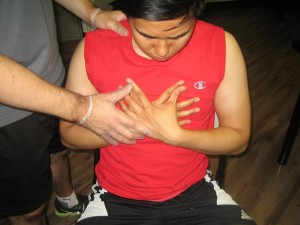Many individuals have different food sensitivities. An individual can experience an allergic reaction as a child or an allergy can abruptly manifest among adults, even though he/she has eaten the food many times before. Strawberries can be considered as a type of food that can trigger the food allergy symptoms. Even though strawberries can provide a number of health benefits, the individual must eliminate the fruit from his/her diet if the symptoms of food sensitivity such as skin rashes occur.
What is strawberry allergy?
If an individual has strawberry allergy, he/she has hypersensitivity to the proteins present in strawberries. Once the individual eats strawberries, the immune system starts to overreact to the proteins and attacks them by producing IgE antibodies. These antibodies enter the bloodstream and cause the cells all over the body to release histamine which is a hormone that triggers irritation and inflammation in the soft tissue such as skin, sinuses and lungs.
Symptoms of skin rashes
Pruritus, hives and contact dermatitis are the usual skin rashes that are linked with a strawberry allergy. Hives are basically welts that develop as clusters that can cause severe itchiness and has the tendency to appear and vanish in a matter of minutes. As for pruritus, it is a term used for inflamed and itchy skin. Contact dermatitis or contact eczema is a skin reaction when it is in direct contact with a particular allergen. This skin reaction causes the formation of blisters that are itchy. These blisters can crust over, weep and even become infected.

Other accompanying symptoms
Aside from the skin rashes, an individual with strawberry allergy can also experience the tingling sensation in the throat or mouth, nasal congestion, asthma and stomach issues. The individual can also experience shortness of breath, difficulty breathing, severe coughing and wheezing.
The nasal congestion can eventually cause postnasal drip, sneezing, sinus pressure and runny nose. As for the stomach issues, it includes vomiting, nausea, diarrhea and bloating. In rare cases, an individual with strawberry allergy can suffer from an anaphylactic shock that causes the whole body to shut down as a response to the allergen. The symptoms include inability to breathe, slurred speech, heart palpitations, skin rashes and swelling. This reaction would require the administration of an injectable epinephrine. If you will register for first aid training, you can easily manage this type of reaction.
Treatment for skin rashes
The treatment for the skin rashes due to strawberry allergy involves avoiding strawberries whether through eating or direct contact. The application of corticosteroid creams are highly effective in treatment the skin reactions. As a first aid measure, you can also apply over-the-counter hydrocortisone creams or prescribed corticosteroid lotions. These medications will help minimize the itchiness and inflammation. Both topical and oral antihistamines can be given to help relieve the itchiness and other symptoms.
Important consideration to bear in mind
The individual must do more than just avoid eating strawberries. Those who are overly sensitive should also avoid foods that contain the fruit or foods that came in contact with it. If the individual develops skin rashes after consumption of strawberries, he/she must not scratch the affected area. This can cause a break in the skin, putting it at risk for skin infections such as impetigo.
